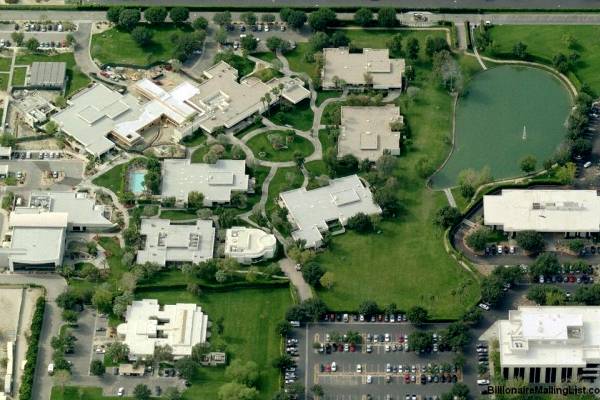4 percent in counties that already had community health centers compared to an unemployment growth rate of 4 percent in other counties. Providing extra stimulus funding to community university hospital in 2009 indicated that financial benefits and job production went together with expanded main care accesstargeted to the communities that need the most assist. As an outcome of Healing Act funding, neighborhood university hospital created an additional $3. 2 billion in financial activity for the communities they served (How to write a legal document before going into a mental health clinic). 20 Much of this is an outcome of the brand-new tasks developed. In the three-month period between January and March 2010, for example, it is approximated that this investment developed or kept over 7,000 jobsover half of which were health professionals.
The funding also produced an extra 1,500 jobs connected to construction. We don't yet understand the number of extra tasks were created as a result of stimulus act spending on community university hospital because more research study will be needed to discover how this job production affected the joblessness rate at both county and state levels. But the past track record of purchasing community health centers and wider economic information show the gains will be crucial. The historical passage of the brand-new health care law previously this year now poses a variety of implementation-related difficulties, consisting of how to deliver care to the additional 32 million Americans who will have health protection.
The Affordable Care Act devotes $11 billion to these centers over the next 5 years to expand services. Neighborhood university hospital are long recognized for their capability to successfully utilize federal grants to enhance and expand patient access to medical, oral, and psychological health services. The consistent boost in federal financing has enabled these centers to supply high quality, available care to the nation's most vulnerable populations. That's why any discussion of how to broaden access to health services while attempting to slow the increasing costs of healthcare should consist of maximum usage of our nation's existing neighborhood university hospital and the brand-new ones required to satisfy future requirements.

Getting https://zenwriting.net/guireerfl5/this-was-a-rather-significant-coup-because-there-was-a-moratorium-on-the My How Can I Become A Good Office Manager For Click to find out more Outpatient Mental Health Clinic To Work
Many of the funding ($9. 5 billion) will be used to offer for expansion and increased operating costs at the existing centers, with the rest predestined for brand-new building and construction ($1. 5 billion). What does this increased investment really buy? With extra financing for operations, community university hospital will include staff to accommodate more clients, and add extra services at the centers to improve care delivery and lessen the chances of patients requiring to get care will go to more costly places. One study finds that increased funding from 1996-2006 resulted in boosts in the arrangement of on-site psychological health services, 24-hour crisis intervention, after-hours urgent treatment, and compound utilize counseling.
To this we now turn. A crucial however less widely gone over byproduct of the increased financing to neighborhood health centers is the huge financial activity in the wider community created by this influx of dollars. Research studies demonstrate that increased funding to health centers creates additional economic stimulus both within the center and beyond. We have actually seen this from the stimulus act financing, which developed brand-new jobs in locations most in need of this financial investment. This is especially crucial during times of financial insecurity. How does expanded economic activity happen? First, and many obviously, health centers straight use individuals in their communities, including crucial entry-level tasks, training, and other community-based chances.

These brand-new university hospital and business that have actually ramped up to serve the centers likewise must work with new staff members. Every dollar spent and every job developed by university hospital has a direct impact on their local economies. Previous studies evaluated the economic activity generated in communities from having a neighborhood health center. Case in point: Utilizing modeling established by the U.S. Department of Farming and the Minnesota IMPLAN Group, a financial modeling firm, scientists determined how much financial activity a particular community university hospital will bring to a neighborhood, with information specific to each county and commercial sector. Utilizing this modeling, we are able in this memo to approximate the financial effect and effect Rehabilitation Center on job creation that the funding provided in the Affordable Care Act will have on communities in 2015 nationally and on a state-by-state basis. This choice appropriates for low skill cases, but might not be geared up to manage more complicated patient requirements. Immediate care centers aren't always run by standard hospitals or health systems. In fact, $161% of immediate care centers in Massachusetts are owned by non-hospital immediate care chains, per a 2018 Massachusetts Health Policy Commission report. A few of the largest US immediate care operators consist of: American Household Care, City MDConcentra, Fast Med, Go, Health, HCA Care, Now, Medication, Post, Next, Care, Patient First, U.S. Healthworks, Interest in the on-demand, economical care of urgent care clinicsparticularly in the middle of the coronavirus pandemichas been growing quickly.
The Single Strategy To Use For What Is A Rural Health Clinic Hrsa
reached 8,774 in November 2018 up eight percent from 8,125 in 2017. St. Louis Urgent Cares Laurel Stoimenoff, PT, CHC, CEO of UCA, states that immediate care clinics deal with about 89 million patient sees each year, which includes more than 29% of all primary care visits in the US, and almost 15% of all outpatient physician gos to. And almost all of those visits are more practical and economical than a journey to the ER; the UCA's 2018 Benchmarking Report discovered that more than 70% of patients waited less than 20 minutes to see a supplier at an urgent care center, and almost 94% were seen in less than 30 minutes. How to run a rural health clinic training.